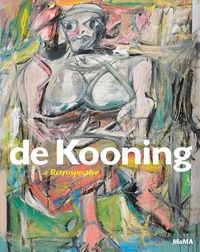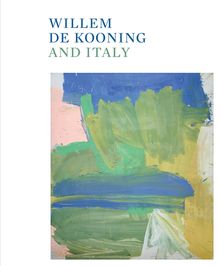| |||||||||||||||||||||||||
ARTIST MONOGRAPHS
|
|
in stock $55.00 Free Shipping UPS GROUND IN THE CONTINENTAL U.S. |
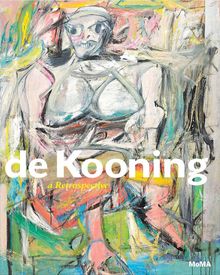 De Kooning: A Retrospective
De Kooning: A Retrospective
Published by The Museum of Modern Art, New York.
Edited with text by John Elderfield. Text by Jim Coddington, Jennifer Field, Delphine Huisinga, Susan Lake.
This massive publication offers an unparalleled opportunity to appreciate the development of Willem de Kooning’s work as it unfolded over nearly seven decades, beginning with his early academic works, made in Holland before he moved to the United States in 1926, and concluding with his final, sparely abstract paintings of the late 1980s.
The volume presents approximately 200 paintings, sculptures, drawings, and prints, covering the full diversity of de Kooning's art and placing his many masterpieces in the context of a complex and fascinating pictorial practice.
An introductory essay by John Elderfield, MoMA's Chief Curator Emeritus of Painting and Sculpture, provides an in-depth exploration of de Kooning's development, context and sources, theory of art, and working methods. Sections devoted to particular areas of the artist's oeuvre provide an illustrated chronology of the period and a brief introduction, as well as detailed entries on groups of works.
With lavish, full-color documentation, this landmark publication is the most complete account of de Kooning's artistic career to date.
PUBLISHER
The Museum of Modern Art, New York
BOOK FORMAT
Paperback, 9.5 x 12 in. / 504 pgs / 628 color.
PUBLISHING STATUS
Pub Date 6/9/2020
Out of stock indefinitely
DISTRIBUTION
D.A.P. Exclusive
Catalog: FALL 2020 p. 11
PRODUCT DETAILS
ISBN 9780870707988 TRADE
List Price: $55.00 CAD $77.00
AVAILABILITY
Not available
STATUS: Out of stock indefinitely. |
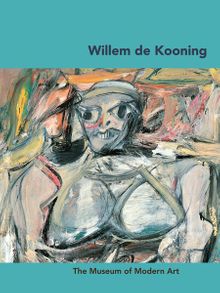 Willem de Kooning
Willem de Kooning
Published by The Museum of Modern Art, New York.
Text by Carolyn Lanchner.
PUBLISHER
The Museum of Modern Art, New York
BOOK FORMAT
Paperback, 6 x 8 in. / 48 pgs / 35 color.
PUBLISHING STATUS
Pub Date 9/30/2011
Out of stock indefinitely
DISTRIBUTION
D.A.P. Exclusive
Catalog: SPRING 2011 p. 4
PRODUCT DETAILS
ISBN 9780870707889 TRADE
List Price: $9.95 CAD $14.95
AVAILABILITY
Not available
STATUS: Out of stock indefinitely. |
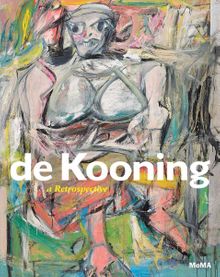 De Kooning: A Retrospective
De Kooning: A Retrospective
Published by The Museum of Modern Art, New York.
Edited and with text by John Elderfield. Text by Jim Coddington, Jennifer Field, Delphine Huisinga, Susan Lake.
PUBLISHER
The Museum of Modern Art, New York
BOOK FORMAT
Hardcover, 9.5 x 12 in. / 504 pgs / 725 color.
PUBLISHING STATUS
Pub Date 9/30/2011
Out of stock indefinitely
DISTRIBUTION
D.A.P. Exclusive
Catalog: FALL 2011 p. 61
PRODUCT DETAILS
ISBN 9780870707971 TRADE
List Price: $85.00 CAD $115.00
AVAILABILITY
Not available
STATUS: Out of stock indefinitely. |
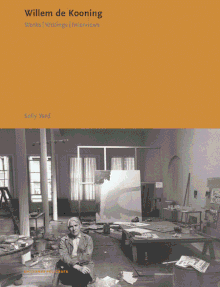 Willem de Kooning: Works, Writings, Interviews
Willem de Kooning: Works, Writings, Interviews
Published by Ediciones Polígrafa.
Text by Sally Yard. Interview by Harold Rosenberg, James T. Valliere.
PUBLISHER
Ediciones Polígrafa
BOOK FORMAT
Hardcover, 8.5 x 11 in. / 160 pgs / 120 color.
PUBLISHING STATUS
Pub Date 7/1/2007
Out of stock indefinitely
DISTRIBUTION
D.A.P. Exclusive
Catalog: FALL 2007 p. 4
PRODUCT DETAILS
ISBN 9788434311381 TRADE
List Price: $45.00 CAD $60.00
AVAILABILITY
Not available
STATUS: Out of stock indefinitely. |
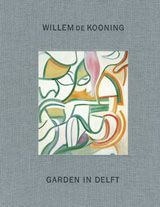 Willem de Kooning: Garden in Delft
Willem de Kooning: Garden in Delft
Landscapes 1928-1988
Published by Mitchell-Innes & Nash.
Essay by David Anfam.
PUBLISHER
Mitchell-Innes & Nash
BOOK FORMAT
Clothbound, 9.5 x 12 in. / 62 pgs / 26 color.
PUBLISHING STATUS
Pub Date 2/1/2006
Out of print
DISTRIBUTION
D.A.P. Exclusive
Catalog: SPRING 2006 p. 105
PRODUCT DETAILS
ISBN 9780974960715 TRADE
List Price: $40.00 CAD $54.00 GBP £35.00
AVAILABILITY
Not available
STATUS: Out of print | 00/00/00 For assistance locating a copy, please see our list of recommended out of print specialists |
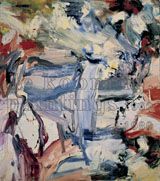 Willem De Kooning: Paintings 1960-1980
Willem De Kooning: Paintings 1960-1980
Published by Hatje Cantz.
Edited by Bernhard Mendes Brgi. Essays by Klaus Kertess, Ralph Ubl and Bernhard Mendes Bürgi.
PUBLISHER
Hatje Cantz
BOOK FORMAT
Hardcover, 9.8 x 12 in. / 176 pgs / 40 color / 15 bw.
PUBLISHING STATUS
Pub Date 11/15/2005
Out of print
DISTRIBUTION
D.A.P. Exclusive
Catalog: FALL 2005 p. 41
PRODUCT DETAILS
ISBN 9783775716291 TRADE
List Price: $60.00 CAD $70.00
AVAILABILITY
Not available
STATUS: Out of print | 00/00/00 For assistance locating a copy, please see our list of recommended out of print specialists |
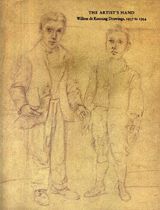 The Artist's Hand: Willem De Kooning Drawings, 1937 To 1954
The Artist's Hand: Willem De Kooning Drawings, 1937 To 1954
Published by Mitchell-Innes & Nash.
Essay by Amy Schichtel.
PUBLISHER
Mitchell-Innes & Nash
BOOK FORMAT
Paperback, 8.5 x 11 in. / 64 pgs / 33 color.
PUBLISHING STATUS
Pub Date 10/2/2002
Out of print
DISTRIBUTION
D.A.P. Exclusive
Catalog: FALL 2002
PRODUCT DETAILS
ISBN 9780971384439 TRADE
List Price: $30.00 CAD $40.00 GBP £27.00
AVAILABILITY
Not available
STATUS: Out of print | 00/00/00 For assistance locating a copy, please see our list of recommended out of print specialists |
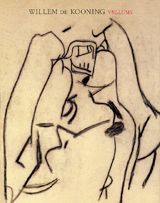 Willem De Kooning: Vellums
Willem De Kooning: Vellums
Published by Mitchell-Innes & Nash.
Essay by Brenda Richardson.
PUBLISHER
Mitchell-Innes & Nash
BOOK FORMAT
Hardcover, 9.75 x 12.5 in. / 72 pgs / 36 color / 6 bw
PUBLISHING STATUS
Pub Date 2/2/2002
Out of print
DISTRIBUTION
D.A.P. Exclusive
Catalog: SPRING 2002
PRODUCT DETAILS
ISBN 9780966076981 TRADE
List Price: $40.00 CAD $50.00
AVAILABILITY
Not available
STATUS: Out of print | 10/22/2002 For assistance locating a copy, please see our list of recommended out of print specialists |
